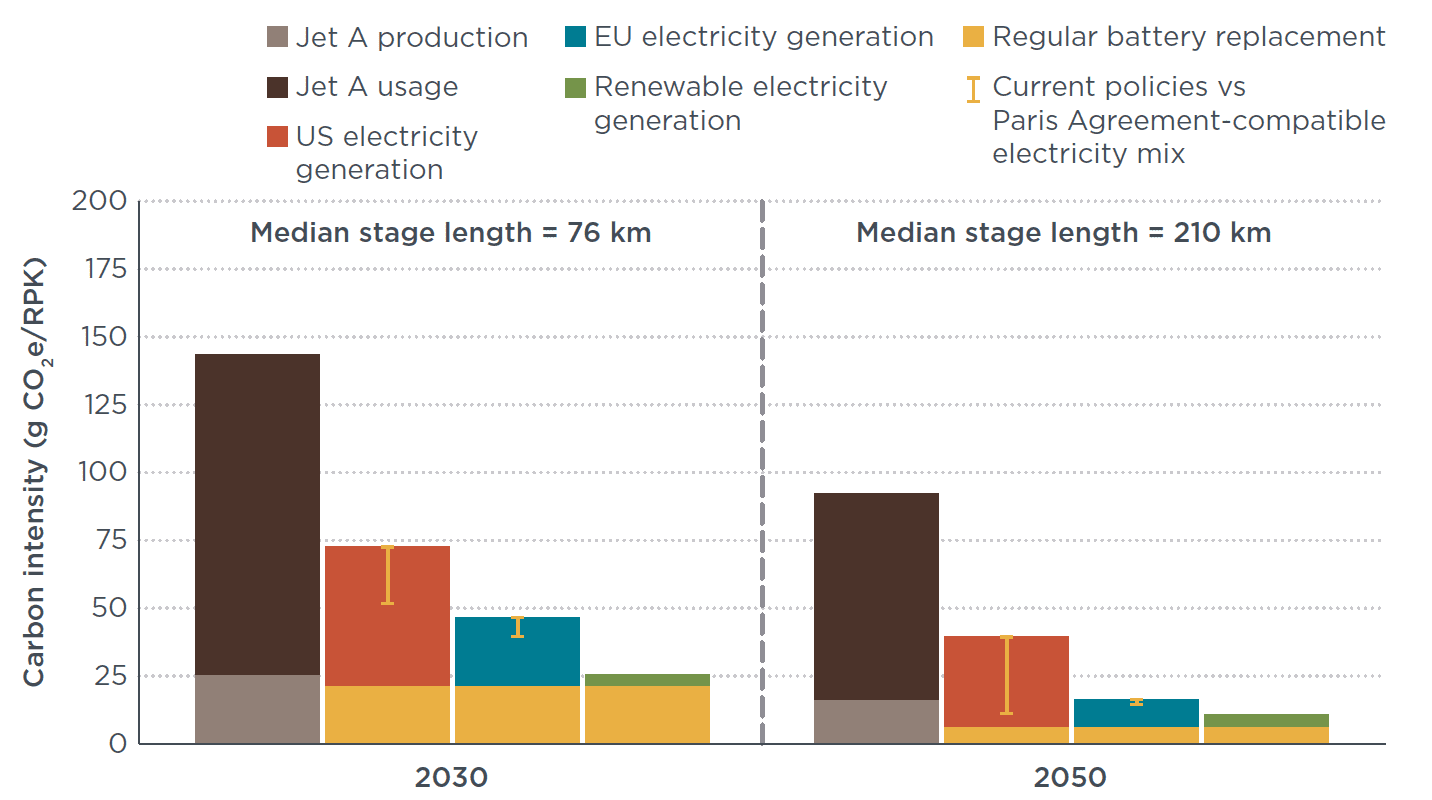White paper
Performance analysis of regional electric aircraft
This study assesses the performance characteristics, operational potential, and CO2 mitigation potential of evolutionary electric-powered aircraft that could enter service by 2030. We modeled three aircraft—the 9Bolt, 19Bolt, and 90Bolt—which can carry 9, 19, and 90 passengers, respectively. This led to the following high-level conclusions.
- Electric aircraft can provide a 49% to 88% reduction in CO2e emissions relative to fossil-fueled reference aircraft. (Figure.) This includes the carbon intensity of the battery production process, which can account for up 80% of GHG emissions from the operation of electric aircraft. Decarbonization of the electric grid and better batteries with higher specific energy reduce the carbon intensity of electric aircraft. By 2050, electric aircraft could mitigate 3.7 Mt of CO2e annually. This would represent 0.2% of the projected emissions from passenger aviation in 2050.
- Electric aircraft can be 2.1 to 3.2 times more energy efficient during cruise. Electric motors convert electricity into propulsive force more efficiently than combusting fossil fuels in an aircraft engine. This difference is pronounced in commuter aircraft that are typically powered by piston engines rather than the turbines that power turboprop aircraft. It is still more pronounced regarding aircraft powered by e-fuels (kerosene or aviation gasoline), which are likely fuel sources in a deeply decarbonized future. In that case, electric aircraft could use 4.5–6.9 times less energy than those running on e-fuels.
- Continued improvements in battery technology are needed to make electric aviation feasible. Current battery technology, with a pack-level battery specific energy of 250 Wh/kg, would allow missions of a maximum of 140 km carrying 9 passengers, after accounting for reserves. Nearly doubling the battery specific energy to 500 Wh/kg would increase the mitigation potential of electric aircraft and enable missions of up to 280 km carrying 90 passengers.
- Reducing the empty mass fraction of the aircraft could significantly increase aircraft range and expand its addressable market. Reducing the operating empty weight without reducing the maximum takeoff mass allows electric aircraft to carry more batteries. The resulting increase in range improves the market coverage provided by electric aircraft. A 30% reduction in EMF from current aircraft technology would nearly quadruple the market coverage of commuter aircraft and improve the market coverage of turboprop aircraft by a factor of 15.
While electric aircraft will be limited to small and short-range passenger aircraft, their higher energy efficiency, lower carbon intensity, and zero-emission operations merit their adoption to their maximum potential. Electric aircraft can service short routes and provide zero-emission flights soon. They can reduce carbon emissions on replaceable routes by as much as 95% and would eliminate direct air pollution from aviation.

Figure. Well-to-wake GHG emissions of electric and fossil-fueled aircraft operations including battery replacement, 2030 and 2050
